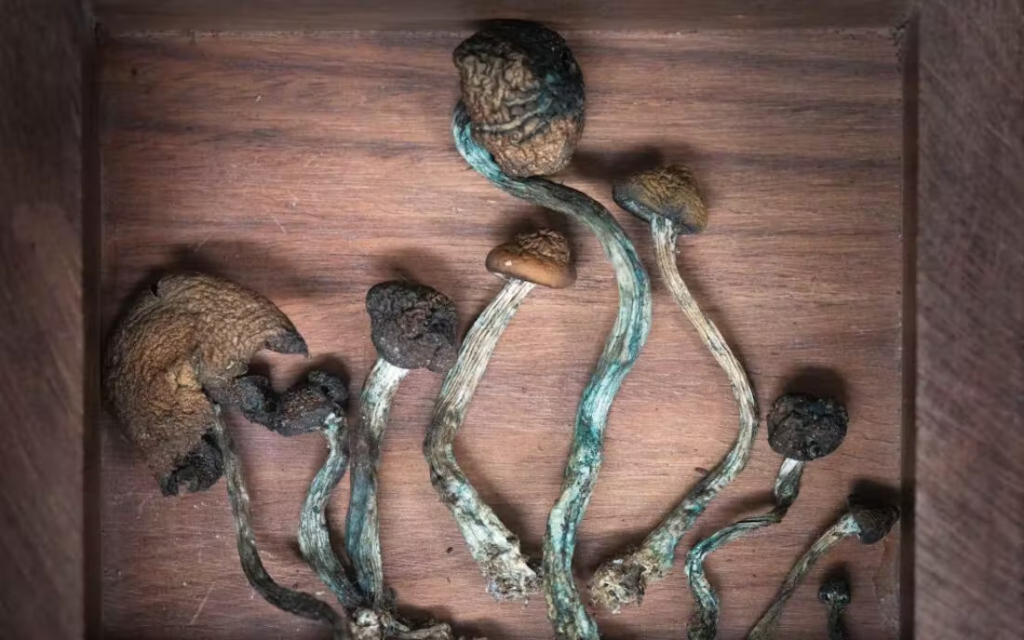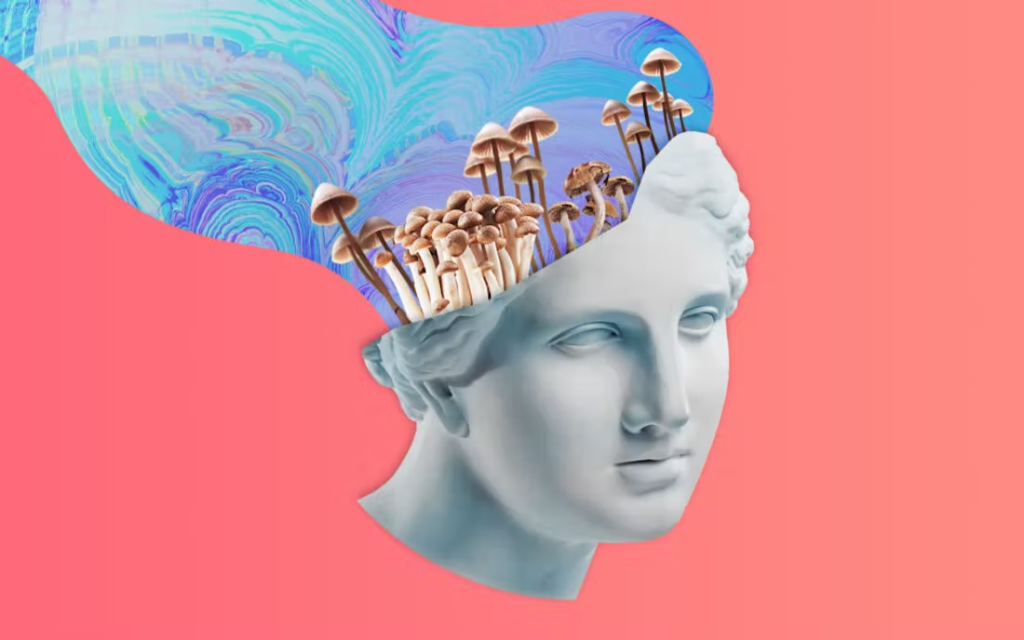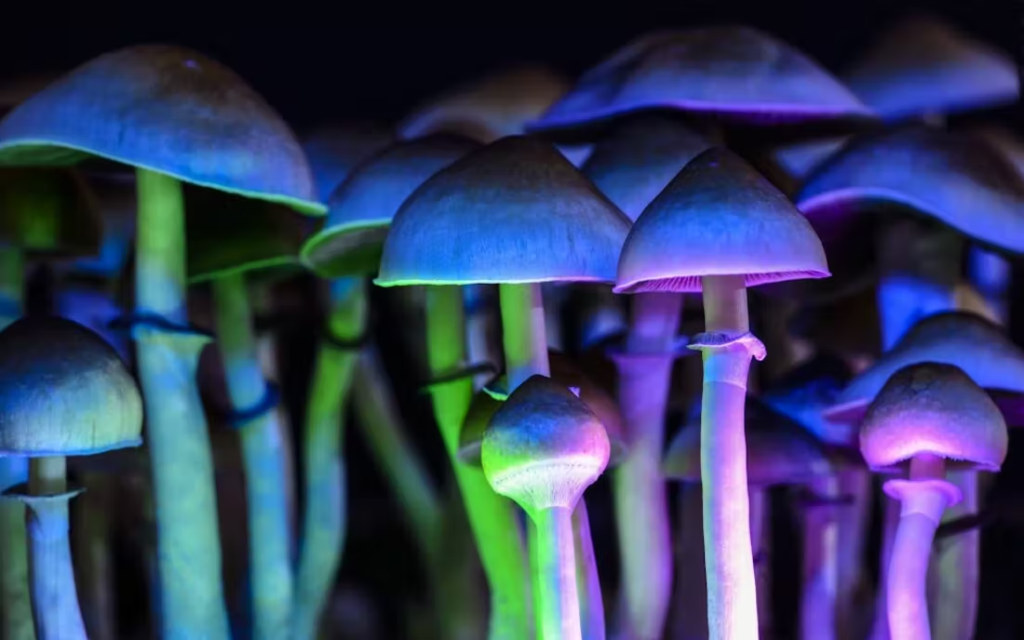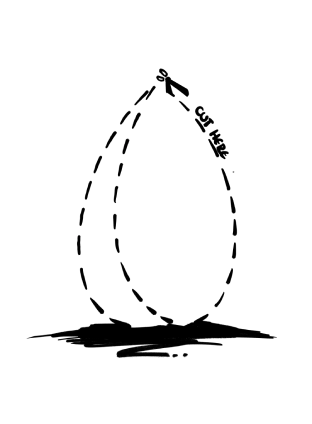Shrooms, aka “magic mushrooms,” are a group of entheogenic plants and chemical substances classified as psychedelics; these include ayahuasca, peyote, iboga, and non-plant substances like ketamine and DMT.
Shrooms and psychedelics have held a long and storied role in human societies across the world for thousands of years. As the War on Drugs appears to wane, states like Oregon and Colorado legalize psychedelics, and local municipalities like Oakland, Ann Arbor, and Washington, DC, decriminalize psychedelics, public and scientific interest has ballooned. Studies indicate that entheogenic medicines may help curb depression and addiction; ketamine clinics and psychedelic-assisted therapies are on the rise.
But as Schedule I substances, shrooms and other psychedelics remain risky to acquire and sources of information needed to make informed decisions remain scarce. Just as there are a large variety of cannabis strains and experiences they facilitate, so too do shrooms vary, with different types, potencies, and trips. Too high of a dose, as with anything, can lead to a rather uncomfortable experience.
While it’s possible to take too high a dose of shrooms, the good news is you can’t physically overdose or die from taking shrooms, and the trip will pass. But if you’re feeling overwhelmed and scared, don’t hesitate to contact your healthcare provider.
What are the effects of shrooms?
Shrooms act like a key to a new dimension. They should open your mind to new ways of thinking about the world around you, inspire new appreciation for your surroundings and your loved ones, and lead you to self-reflections that help you find new planes beyond the world around you. You don’t need to see hallucinations to benefit from shrooms.

Like weed, the effects of shrooms depend greatly on the dosage you take and the type of shroom, as well as your body chemistry and immediate environment. After taking shrooms, you may just feel a little silly and stoned, or they may bring on intense audiovisual hallucinations.
Research in the last decade has explored the medicinal benefits of shrooms, such as treatment for people suffering with depression, anxiety, and addiction. It may also ease the psychological toll for patients being treated for cancer. The next few years will likely uncover even more benefits in shrooms and other entheogenic plants.
What is a dose of shrooms?
A comfortable dose of shrooms depends on each consumer. For some, taking a gram or so is a microdose and won’t induce visuals but can help someone feel less anxious and be more receptive to creative ideas. For others, eating a whole eighth (3.5 grams) and seeing intense visions while on a hike might feel normal.
Most shroom consumers stick within this range of 1–3.5 grams.
What to do if you take too many shrooms
Too much of a good thing, even too much of a great thing, can lead to some bad things. Shrooms can elicit a large spectrum of effects depending on the type consumed, how much is consumed, and the consumer’s physiological factors (age, metabolism, health history).

Too high of a shroom dose can lead to, among other symptoms, uncomfortably intense hallucinations, anxiety, and paranoia. Past research has claimed that too many shrooms can induce psychosis, delusions, and losing touch with reality due to the hallucinations that mushrooms can induce. More recent findings allege this claim is faulty, rooted in stigma rather than research.
If you find yourself in a situation where you took too many shrooms, don’t panic. The best thing you can do is find someone who is sober as quickly as possible to anchor your experience. Taking an excessive dose of shrooms can cause paranoia, unusual body sensations, and vomiting, and while highly unlikely, even seizures.
The effects of a high dose of shrooms typically last 6–8 hours at most, though psychological effects, such as anxiety or mood swings, can linger for longer. As in our guide on what to do if you’re too high from weed, we recommend you hydrate, eat something, and stay in a calm, controlled environment. A walk or exercise might be too stimulating for an intense shroom trip, but try to access fresh air.
The dearth of shroom research means that they and their effects are still somewhat unknown and unpredictable. If you feel seriously ill, don’t hesitate to contact your medical provider.
Can you die from taking too many shrooms?

While it can certainly feel awful when you’ve taken too many shrooms, the likelihood of dying from them is slim to none. Very few consumers report having to seek medical attention, and scientists studying the negative outcomes when taking psilocybin mushrooms have stated that they often result from high (the exact amount isn’t specified) doses and mixing shrooms with other substances—more research is needed to make any definitive statement.
High doses of shrooms often impair a person’s coordination and balance, as well as their depth of field, so we recommend avoiding driving, strenuous physical activity, and drinking alcohol when taking shrooms.
Keep in mind, the enormous range in types of mushrooms means not all of them are benign. Different types of mushrooms contain different amounts of these toxins, and some are definitely too toxic to eat. Most mushroom poisonings come from misidentifying mushrooms and consuming a poisonous type.
Are shrooms addictive?
Much like with cannabis, shrooms’ classification as a Schedule I substance was based more on propaganda and fearmongering than scientific evidence. Shrooms are not an addictive substance the way alcohol, opioids, and amphetamines can be; taking shrooms does not lead to physical dependency.
Some people, however, can become emotionally dependent on shrooms to cope with factors in their daily lives. We don’t yet know the full extent of the effects of psilocybin and psychedelics on the human brain, so we can’t say with certainty if psilocybin mushrooms don’t have any addictive properties.
Source: Amelia Williams – leafly.com

